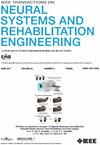用眼动和言语融合网络早期识别轻度认知障碍和阿尔茨海默病的多模式方法
IF 4.8
2区 医学
Q2 ENGINEERING, BIOMEDICAL
IEEE Transactions on Neural Systems and Rehabilitation Engineering
Pub Date : 2025-04-15
DOI:10.1109/TNSRE.2025.3561043
引用次数: 0
摘要
在阿尔茨海默病(AD)的早期阶段,特别是在轻度认知障碍(MCI)发作期间,检测仍然具有挑战性,因为初始症状与正常衰老过程重叠。鉴于目前还没有治愈的方法,目前的药物只能减缓疾病的进展,早期识别高危人群至关重要。眼球追踪和语音分析的结合提供了一种很有前途的诊断解决方案,它提供了一种非侵入性的方法来检查健康对照者和可能发展为AD的MCI患者之间的差异。在这项研究中,我们分析了在King-Devick测试和阅读任务期间收集的78名参与者(37名对照,20名轻度认知障碍和21名AD)的多模态临床眼动追踪和语音数据集,以分类和诊断轻度认知障碍/AD与健康对照。为此,我们开发了一个融合神经网络,这是一个基于深度学习的分类模型,集成了凝视和语言衍生特征,包括瞳孔大小变化、注视持续时间、跳眼运动和语言延迟,以提高MCI的诊断性能。我们对MCI诊断的平均分类准确率为79.2%,对AD的平均分类准确率为82%。我们的研究结果表明,与瞳孔大小和眼-言语时间动态相关的特征是检测任务的有力指标。此外,研究结果表明,使用多模态数据(凝视+语音)比单独使用语音或凝视的单模态数据显著提高了分类精度。本文章由计算机程序翻译,如有差异,请以英文原文为准。
A Multimodal Approach for Early Identification of Mild Cognitive Impairment and Alzheimer’s Disease With Fusion Network Using Eye Movements and Speech
Detecting Alzheimer’s disease (AD) in its earliest stages, particularly during an onset of Mild Cognitive Impairment (MCI), remains challenging due to the overlap of initial symptoms with normal aging processes. Given that no cure exists and current medications only slow the disease’s progression, early identification of at-risk individuals is crucial. The combination of eye-tracking and speech analysis offers a promising diagnostic solution by providing a non-invasive method to examine differences between healthy controls and individuals with MCI, who may progress to develop AD. In this study, we analyzed a multimodal clinical eye-tracking and speech dataset collected from 78 participants (37 controls, 20 MCI, and 21 AD) during the King-Devick test and a reading task to classify and diagnose MCI/AD versus healthy controls. To that end, we developed a Fusion Neural Network, a deep learning-based classification model that integrates gaze and speech-derived features, including pupil size variations, fixation duration, saccadic movements, and speech delay, to improve MCI diagnosis performance. We achieved an average classification accuracy of 79.2% for MCI diagnosis and 82% for AD. Our findings indicate that features related to pupil size and eye-speech temporal dynamics are strong indicators for detection tasks. Moreover, the results indicate that using multimodal data (gaze + speech) significantly improves classification accuracy compared to unimodal data from speech or gaze alone.
求助全文
通过发布文献求助,成功后即可免费获取论文全文。
去求助
来源期刊
CiteScore
8.60
自引率
8.20%
发文量
479
审稿时长
6-12 weeks
期刊介绍:
Rehabilitative and neural aspects of biomedical engineering, including functional electrical stimulation, acoustic dynamics, human performance measurement and analysis, nerve stimulation, electromyography, motor control and stimulation; and hardware and software applications for rehabilitation engineering and assistive devices.

 求助内容:
求助内容: 应助结果提醒方式:
应助结果提醒方式:


